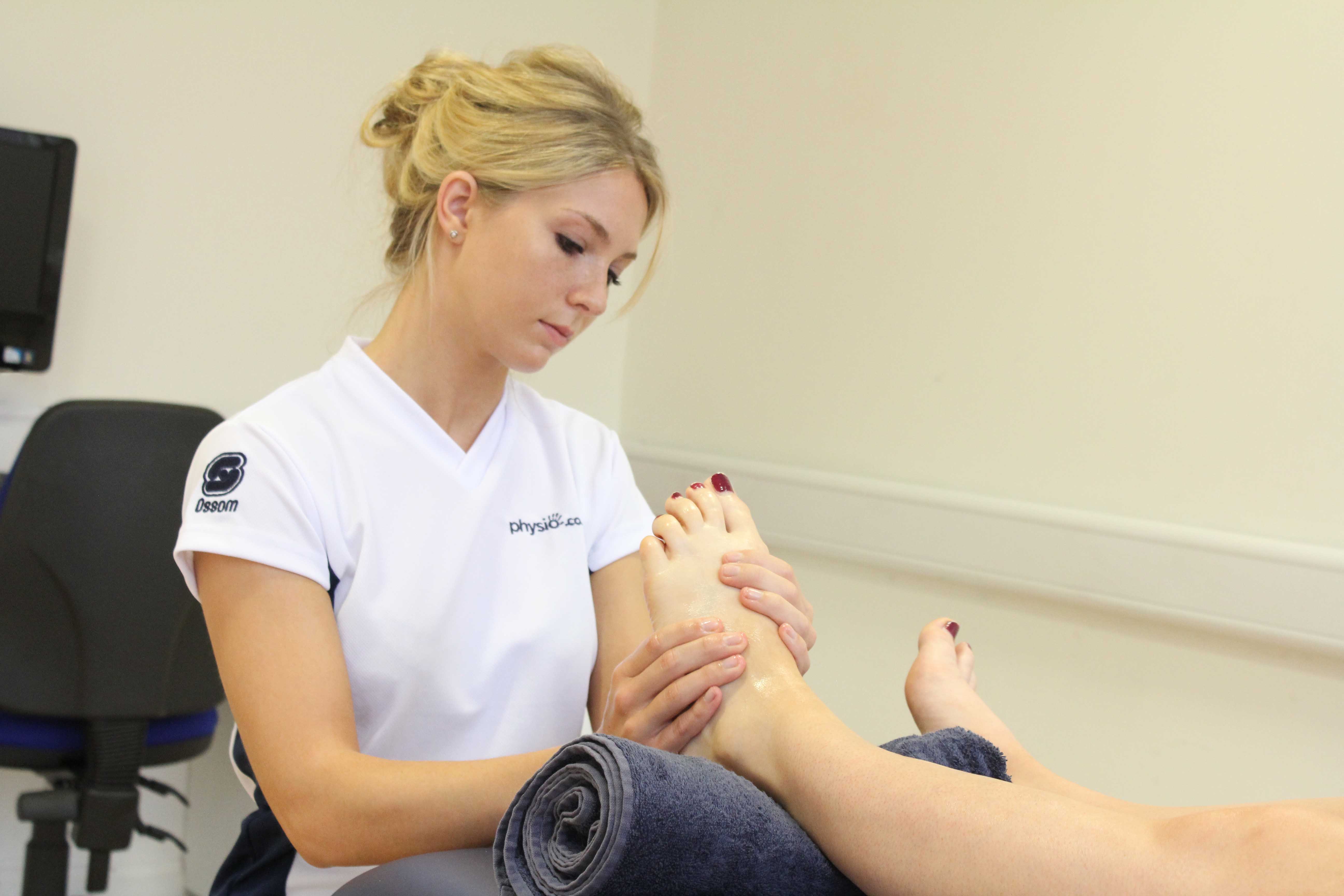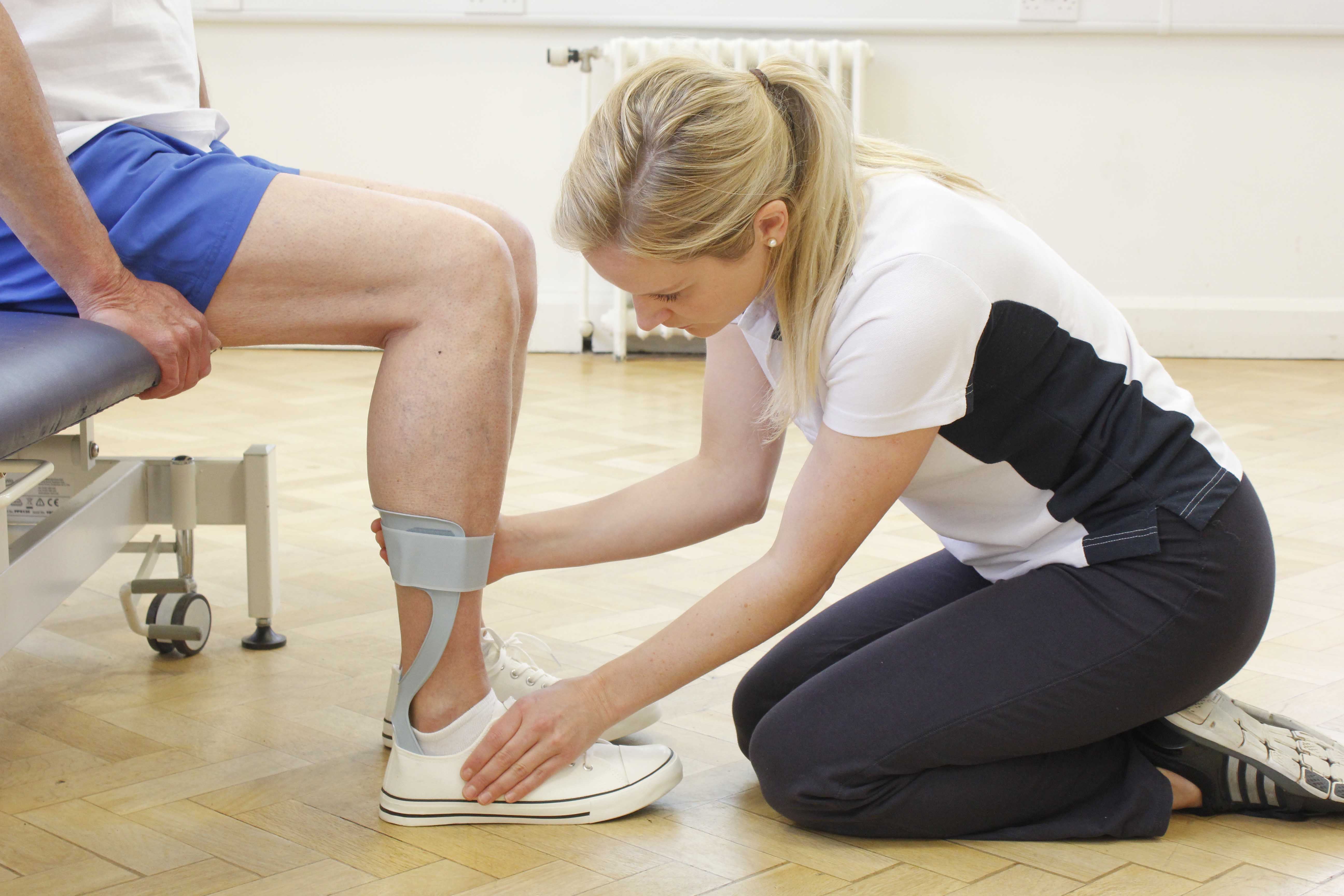What is a sesamoid injury?
Sesamoids are small bones embedded in tendons. They are found in several joints in the body. In the foot, the sesamoids are two pea-shaped bones underneath the ball of the foot. The sesamoids act as pulleys for the tendons of the foot. A sesamoid injury occurs if the sesamoid bones or the surrounding tissue is damaged. Physiotherapy is an important treatment for sesamoid injuries.
 Above: Soft tissue massage of the planta fascia along the sole of the foot.
Above: Soft tissue massage of the planta fascia along the sole of the foot.How does a sesamoid injury happen?
The sesamoid area can be injured in many different ways. It can be injured by repetitive stress (overuse injury) or from trauma (an injury from landing, jumping or twisting on the forefoot). Sesamoid injuries are more commonly seen in individuals that play sports requiring lots of forefoot loading, pivoting, or high intensity running (i.e. netball, long distance running and dancing).
What are the symptoms of a sesamoid injury?
A sesamoid injury causes pain when weight is out through the ball of the foot. Many people will walk on the outside border of their foot to avoid putting weight through the sesamoid bones. With overuse injuries the pain may the pain may reduce over the course of the day. However, if the pain is from a fracture of a sesamoid bone the pain will remain constant. Other symptoms may include:
What should I do if I have a sesamoid injury?
If you suspect that you have a sesamoid injury, you should arrange an assessment immediately. Sesamoid injuries have a poor blood supply and are, therefore, renowned for having problems with healing. Therefore, the earlier a diagnosis is made and treatment is started, the better your chance of making a full recovery.
To arrange a physiotherapy assessment call Physio.co.uk on 0330 088 7800 or book online.
 Above: Therapist fitting an ankle splint to support the ankle and prevent foot drop
Above: Therapist fitting an ankle splint to support the ankle and prevent foot dropWhat shouldn’t I do if I have a sesamoid injury?
If you suspect that you have a problem with your sesamoid bones then you should avoid activities that involve running, jumping and twisting on the ball of the foot. Tight shoes and high heels should also be avoided.
Physiotherapy treatment following a sesamoid injury.
Physiotherapy is very important in the diagnosis and management of a sesamoid injury. In some cases, your physiotherapist may refer you for imagining techniques such as an X ray or MRI scan. The treatment that you receive will depend on the problems that you are experiencing. Possible physiotherapy can include:
Could there be any long-term effects from a sesamoid injury?
If a sesamoid injury is misdiagnosed or managed incorrectly there could be long-term effects. There is a poor blood supply to the sesamoids, therefore, if a fractured sesamoid is not successfully treated, there may be non-healing of the bone and possibly death of the portion of the bone. In this case surgery may be required to remove the sesamoid bone or to stimulate healing
To arrange a physiotherapy assessment call Physio.co.uk on 0330 088 7800 or book online.

 0330 088 7800
0330 088 7800

































